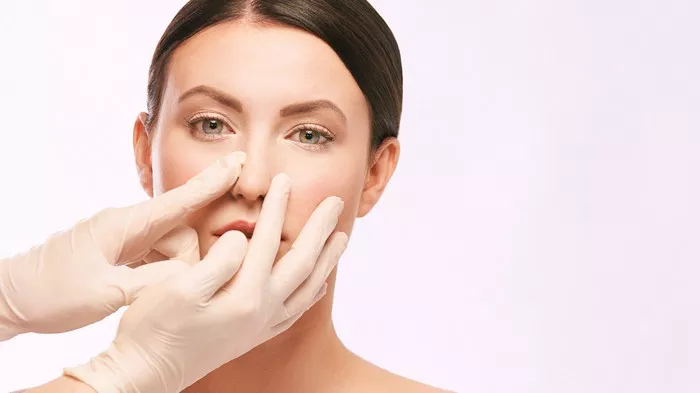Rhinoplasty, commonly known as a nose job, is a surgical procedure performed to reshape or reconstruct the nose for functional or aesthetic purposes. While rhinoplasty is generally safe, there is a risk of infection, like with any surgical procedure. Infections after rhinoplasty can lead to complications and delay the healing process. In this article, we will explore the potential causes of infection after rhinoplasty and discuss the risk factors associated with this complication.
1. Bacterial Contamination
Bacterial contamination is a significant cause of infection after rhinoplasty. The surgical site is exposed to various bacteria during the procedure, and if proper precautions are not taken, these bacteria can enter the incisions and cause an infection. Common bacteria associated with surgical site infections include Staphylococcus aureus and Streptococcus species.
2. Poor Surgical Technique
The surgical technique used during rhinoplasty plays a crucial role in the development of postoperative infections. Inadequate surgical techniques, such as improper handling of tissues, poor wound closure, or failure to maintain a sterile environment, can increase the risk of infection. It is essential to choose a skilled and experienced surgeon who follows strict sterilization protocols to minimize the risk of complications.
3. Nasal Packing and Splints
Following rhinoplasty, nasal packing and splints are sometimes placed inside the nose to support the newly reshaped structure and control bleeding. While these are essential for the initial healing process, they can create an environment conducive to bacterial growth and increase the risk of infection. The packing and splints can obstruct proper airflow, trap moisture, and provide a breeding ground for bacteria. Therefore, it is crucial to follow the surgeon’s instructions regarding the removal of nasal packing and splints to minimize the risk of infection.
4. Poor Wound Care
Proper wound care is essential to prevent infection after rhinoplasty. Failure to maintain a clean and sterile environment, inadequate cleaning of the incision sites, or neglecting to follow postoperative care instructions can increase the risk of infection. It is crucial to keep the surgical site clean, follow the prescribed cleaning regimen, and avoid touching or manipulating the incisions with unclean hands.
5. Pre-existing Nasal Conditions
Patients with pre-existing nasal conditions, such as chronic sinusitis or nasal congestion, may have an increased risk of infection following rhinoplasty. These conditions can alter the normal nasal flora and compromise the body’s natural defense mechanisms, making it easier for bacteria to cause an infection. It is important to address and manage any underlying nasal conditions before undergoing rhinoplasty to minimize the risk of complications.
6. Smoking
Smoking is a significant risk factor for infection after rhinoplasty. Smoking compromises blood circulation, impairs wound healing, and weakens the immune system, making smokers more susceptible to infections. It is strongly advised to quit smoking several weeks before the procedure and to abstain from smoking during the recovery period to promote optimal healing and reduce the risk of infection.
7. Poor Immune System Function
Individuals with compromised immune system function, such as those with autoimmune disorders, diabetes, or undergoing immunosuppressive therapies, may have a higher risk of developing infections after rhinoplasty. A weakened immune system can impair the body’s ability to fight off bacteria, making it more susceptible to infection. Patients with compromised immune function should discuss their condition with their surgeon before undergoing rhinoplasty to assess the potential risks and take appropriate precautions.
8. Contaminated Environment
The environment in which the rhinoplasty procedure is performed can also contribute to the risk of infection. Operating rooms that are not properly sterilized or maintained can harbor bacteria that may increase the likelihood of postoperative infections. It is crucial to choose a reputable surgical facility that adheres to strict sterilization protocols and maintains a clean and safe environment.
Preventing Infection After Rhinoplasty
While infection after rhinoplasty can occur despite preventive measures, there are steps you can take to reduce the risk:
- Choose a qualified and experienced surgeon who follows strict sterilization protocols.
- Follow preoperative instructions provided by your surgeon, such as discontinuing certain medications or quitting smoking.
- Maintain good hygiene and follow postoperative wound care instructions.
- Avoid touching or manipulating the incision sites with unclean hands.
- Keep the surgical site clean and dry.
- Avoid environments that may increase the risk of contamination or exposure to bacteria.
- Attend all follow-up appointments with your surgeon for proper monitoring and care.
If you notice any signs of infection after rhinoplasty, such as increased pain, swelling, redness, or drainage from the incision sites, it is essential to contact your surgeon immediately. Prompt diagnosis and treatment can help prevent complications and promote a successful recovery.
In conclusion, infection after rhinoplasty can occur due to various factors, including bacterial contamination, poor surgical technique, nasal packing, poor wound care, pre-existing nasal conditions, smoking, compromised immune system function, and a contaminated environment. Understanding these potential causes and taking preventive measures can help minimize the risk of infection and promote a smooth and successful recovery after rhinoplasty. It is crucial to choose a qualified surgeon, follow proper hygiene and wound care practices, and seek immediate medical attention if signs of infection arise.

